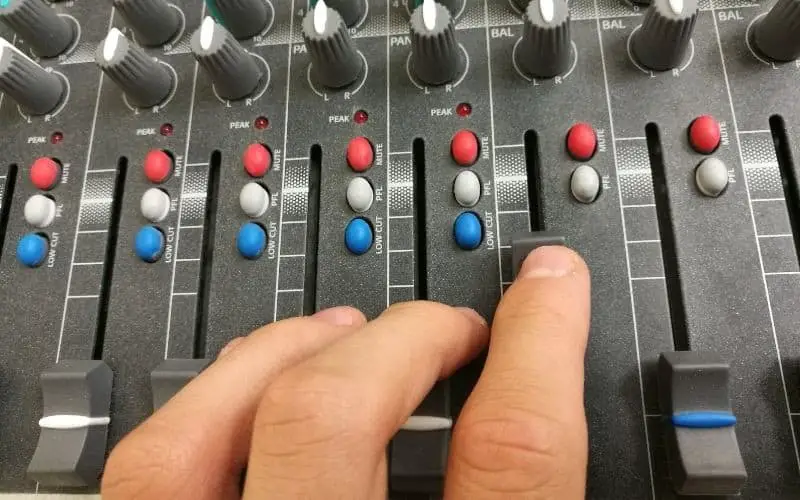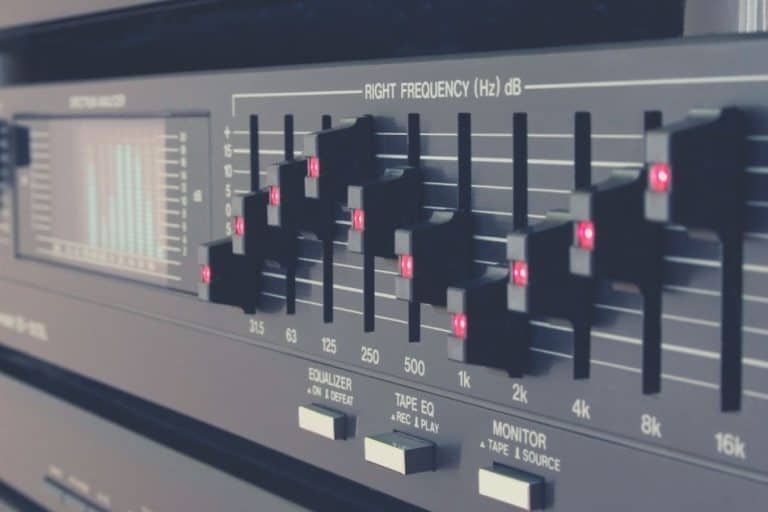Uncertainty about how to balance bass and treble is something every budding audio technician grapples with when equalizing an audio track. Sound reproduction teams and music producers typically make the bass higher than the treble but this only results in an unbalanced equalization; the treble should always be higher.
In audio engineering, balancing bass and treble refers to adjusting the relative levels of low frequencies (bass) and high frequencies (treble). This can be done manually by using equalization software or automatically by using an automatic gain control (AGC) circuit.
In this post, we lay out exactly how to find the perfect balance between bass and treble for a superior quality mix.
Tips For How To Balance Bass And Treble On An Audio Track
There are many ways sound production specialists balance the bass and treble levels on an audio track. Audio technicians and music producers tend to analyze the audio track by checking the balance (rather than frequency) to find out whether the mix requires more treble or bass.
The treble should be higher than the bass to achieve a smooth balance in the equalization (EQ) because it eliminates common problems, such as:
- mid-range frequency confusion,
- low-frequency hum; and
- voice projection
You may need to adjust the speakers or the computer audio to achieve EQ.
Scenario 1: How To Balance Treble And Bass On A Speaker
- Right-click on the speaker image in the taskbar
- Select “Playback Devices” from the menu
- Click the “Speakers” menu or another amplifier on which you would like to change the sound settings
- Look at the Base Boost box and select the Enhancements tab to change the levels
Scenario 2: How To Balance Bass And Treble On A Computer
- Click on the speaker icon in the notification bar
- Select the Mixer link to download the volume mixer
- Click on the speaker icon above the master volume
- Select this option on the Enhancements tab and click on the Bass Boost to change the levels
Related article – The 6 Best Headphones For Music Production

Why An Equalizer Is The Best Way To Learn How To Balance Bass And Treble?
An equalizer presents the best opportunities to balance bass and treble, as it makes manipulating frequencies on an audio track effortless. The technology is popular in recording studios and can be in analog or digital form. Equalizers or EQs adjust the different sound elements for an appealing and cohesive result in a song or audio track.
Equalization has three basic levels – bass, mid, and treble. This piece of technology achieves a refined and cohesive result on an audio track by smoothing it out for the listener.
The most commonly used EQ in studios – the graphical EQ – has decibels on one axis and frequencies on the other. It provides sliders that allow sound technicians to adjust frequencies along the decibel scale. The layout is intuitive; bass frequencies on the left, mid-range frequencies in the middle, and treble frequencies on the far right.
Learning how to balance the bass and treble on graphic equalizers is easy. For example, if the treble on an audio track is too loud, reducing the volume levels on one or two of the higher frequencies can balance it. The more you get to know how the three levels relate to one another, the simpler it becomes to find a balance.
Related article – What Hz Is Best For Bass?

Top 3 Reasons Why the Treble Should Be Higher than the Bass in Equalization
Now that you know that the treble should always be above the bass for equalization – here are three reasons why that rule applies to EQ:
1. Higher Treble Achieves Better Voice Projection in the Mix
Vocal projection is an essential consideration in how to balance bass and treble in an audio track. It carries the song’s message, which, apart from the beats, keeps a listener tuned in to the mix. If you increase the bass, there is a possibility of distorting the track’s vocals and obscuring the listener’s ability to engage with the vocal projection.
Vocals typically appear in the 700 to 3k Hz frequency range (the “voice range”). Increasing the bass overwhelms that frequency for an audio track. Vocals make it a song, and distorting them ruins the sound quality and essence of the track beyond repair.
There is no ideal EQ setting for vocals because even a minute change affects the outcome. Too much bass or treble adjustment threatens the smoothness of the audio track, so this is one area that needs a touch of finesse.
2. Keeping The Bass Below The Treble Reduces Mid-Range Muddiness
One of the most problematic issues for audio technicians, mixing engineers, and music producers is the muddiness in the 400 to 800Hz frequency range. It escalates when you increase the bass, which is also why experts recommend making the treble higher. At 400-600Hz, the frequencies have many bass elements; adding bass is risky.
The mid-frequency region may seem more like noise to a lay listener, but it provides most of an audio track or song’s unique character.
At all costs, an audio technician should avoid distorting the mid frequencies in an audio track by keeping the treble higher than the bass. However, overdoing it will affect the frequency range between 400 to 800 Hz, known as the “life region.” The frequency range is essential in instruments like the piano—it is where the “pep” lies.
3. Decent Treble-Bass Balance Cuts the Low-Frequency Hum or Rumble Effect
A higher bass causes many distortions, including playing into the hum of the frequencies below 440 Hz. These sounds travel for longer, and even small doses can overpower the treble and ruin a song with excessive vibration. It is why the roll-off feature in equalizers cleans audio data below 30Hz for better listening.
Knowing how to balance bass and treble includes knowing how to boost the essential frequencies of the bass only. Doing so will eliminate the low-end frequency hum. You can usually use the audio production software’s equalizer to balance extra-low frequencies (in the 50 Hz to 250 Hz range).

Frequently Asked Questions
What is a “treble” sound?
The treble refers to musical tones at the higher end of the human hearing spectrum. The treble clef in music contains these high notes, including flute tones, guitar tones, soprano voices, violin tones, and piccolos. The frequencies lie between 2,048 to 16,384 Hz (C7C10).
Related article – Can You Play Electric Guitar With Headphones
Why should treble be higher than bass in an audio track?
When treble is higher than bass, it balances the track and avoids low bass feedback or distortions. Increase the bass until the sound distortion disappears, but never place it above the treble if you want to achieve a perfect sound quality in the mix.
Is there a key difference between bass and treble?
The only difference is the frequency level. Bass consists of the lowest musical sounds; treble contains the highest frequencies in the sound range audible to the human ear.
What ratios are best for the bass, mid, and treble setting?
Initially, set the bass, mid, and treble at a 4:5 ratio, regardless of the system. It offers far more control for highlighting the treble.
What frequency constitutes bass, mid, and treble ranges?
- Treble frequencies: 8,000 to 15,000 hertz
- Mid frequencies: 400 to 2,500 hertz
- Bass frequencies: 60 to 120 hertz
Equalizers with more bands have finer divisions of these frequencies.
Final Thoughts
Equalizing involves a lot more than playing with the treble or bass volume levels on an audio track. It is an art to enhance a listener’s ability to hear a song, and the vocal range is especially sensitive to careless bass adjustments. Rather, increase the bass and the treble with extra care so that it raises the high and low frequencies in a way that minimizes mid-frequency muddiness.
Remember, keep the treble higher than the bass in an EQ for superior sound quality through your latest headphones or headset. Learning how to balance bass and treble is sure to enhance your enjoyment of the track, and it gets easier with practice.
